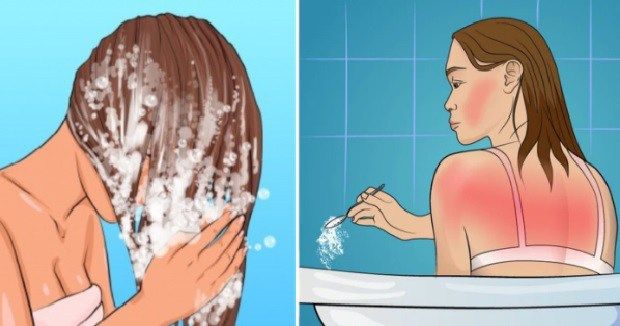spray alcohol on bed: discover the Surprising Benefits spray alcohol on bed
spray alcohol on bed: Why Spraying Alcohol on Your Bed Could Revolutionize Your Sleep and Health!
Do you ever wonder if there’s a better way to keep your bed fresh and clean in between washes? Well, the latest trend in bed hygiene might hold the answer – alcohol sprays. Yes, you heard that right! Spraying your bed with alcohol has gained popularity recently, with claims of sanitizing, refreshing, and even banishing bed bugs. But what’s the science behind it, and are these claims too good to be true?
Understanding the Basic Science
Before we dive into the benefits and myths surrounding alcohol sprays, it’s crucial to understand the science behind them. The types of alcohol commonly used for this purpose are isopropyl alcohol and ethanol. These alcohols have antimicrobial properties that make them effective for cleaning and disinfecting.
Isopropyl alcohol, also known as rubbing alcohol, is a colorless liquid derived from propylene. Ethanol, on the other hand, is an alcohol compound found in alcoholic beverages. Both types of alcohol work by denaturing proteins, disrupting cell membranes, and dehydrating microorganisms.
The Benefits of Spraying Alcohol on Your Bed
Alcohol sprays offer several benefits for keeping your bed fresh and clean. Let’s explore some of the primary advantages:
1. Odor Control and Spot Cleaning
One of the most noticeable benefits of using alcohol sprays on your bed is odor control. By misting your mattress, pillows, and bedding with alcohol, you can help eliminate unwanted smells caused by sweat, stains, or pet odors. Additionally, alcohol can act as a spot cleaner, helping to remove small stains or spills on your bed’s surface.
2. Reduction of Allergens, Bacteria, and Viruses
Alcohol’s antimicrobial properties make it effective in reducing the presence of allergens, bacteria, and viruses on your mattress. Regular spritzing can help kill or neutralize these microbes, providing a cleaner and healthier sleeping environment. However, it’s essential to note that alcohol sprays are not a substitute for regular washing and vacuuming of your bedding materials.
The Potential Risks and Precautions
While alcohol sprays offer promising benefits, it’s crucial to be aware of their potential risks. Consider the following precautions when incorporating alcohol sprays into your bed hygiene routine:
1. Flammability
Alcohol is highly flammable, and without the proper precautions, spraying it on your bed could pose a fire hazard. Before spraying, ensure your room is well-ventilated, avoid open flames or smoking nearby, and allow time for the alcohol to dry completely before coming into contact with any ignition sources.
2. Skin Irritation
Alcohol can cause skin dryness and irritation, especially for those with sensitive skin. To minimize the risk, wear gloves when spraying your bed and avoid direct skin contact with alcohol. If you experience any adverse reactions, discontinue use immediately and consult a healthcare professional.
3. Safe Usage and Quantities
Over-saturating your bed with alcohol can lead to other issues like mold or damage to the mattress fibers. To maintain a safe environment, follow the recommended guidelines for alcohol sprays. Lightly mist the surface and allow it to air dry, ensuring the alcohol is evenly distributed.
Debunking Common Myths
Now that we’ve explored the benefits and precautions surrounding alcohol sprays, let’s debunk some common myths and clear up any misconceptions:
1. Alcohol vs. Bed Bugs
Contrary to popular belief, alcohol sprays do not kill bed bugs or their eggs. While alcohol can act as a deterrent or aid in localized cleaning, it is not a reliable method for eradicating a bed bug infestation. To effectively eliminate bed bugs, seek professional pest control assistance.
2. The Effectiveness of Alcohol on Mites
Similarly, alcohol sprays are not a miracle cure for mite infestations. While alcohol can kill mites on contact, it is not effective at reaching the deeper layers of bedding where mites may reside. Regular cleaning, washing, and vacuuming remain the best practices for mite control.
Alternatives and Complementary Practices
While alcohol sprays can offer benefits for bed hygiene, it’s important to consider other methods and complementary practices for maintaining a clean and healthy sleeping environment. Here are a few alternatives worth exploring:
1. Specific Solutions for Bed Bugs or Mites
If you’re dealing with a bed bug or mite infestation, consult with a professional pest control service. They have specialized treatments and strategies to address these infestations effectively.
2. Regular Laundering and Vacuuming
Keeping your bedding clean is essential to minimize the presence of allergens, bacteria, and viruses. Regularly washing your sheets, pillowcases, and mattress covers in hot water and vacuuming your mattress and pillows can significantly reduce the buildup of dust, dead skin cells, and dust mites.
3. Mattress Protectors
Investing in mattress protectors can provide an extra layer of defense against spills, stains, and the buildup of allergens. Look for protectors that are waterproof, breathable, and easy to clean.
Conclusion
While spraying your bed with alcohol may not be a magical solution for bed bugs or mites, it does offer benefits for odor control, spot cleaning, and reducing certain microbes. However, it’s important to approach this trend with caution, considering the potential flammability and skin irritation risks. Remember that alcohol sprays are just one piece of the puzzle when it comes to maintaining a clean and healthy sleeping environment. Combine them with regular laundering, vacuuming, and other preventive measures for optimal bed hygiene. Ultimately, the key is finding a holistic approach that works for you and suits your specific needs.






